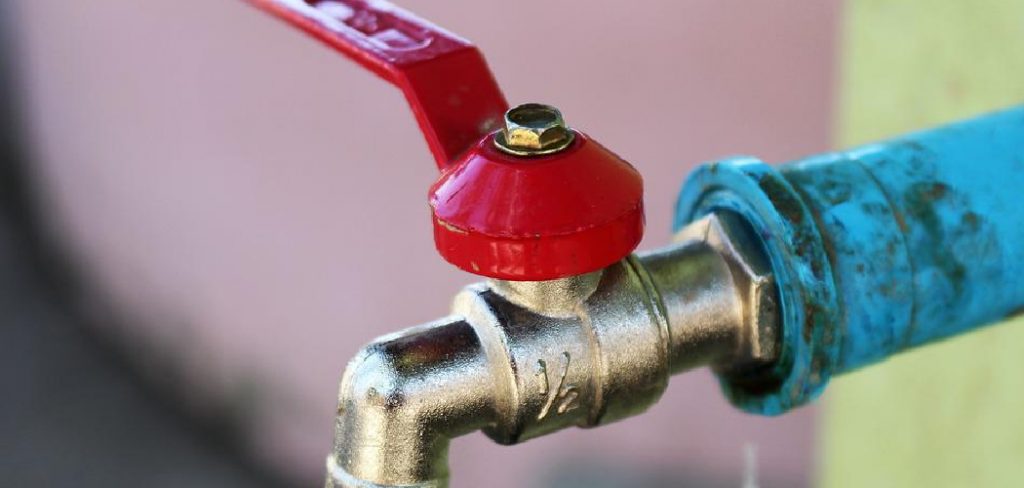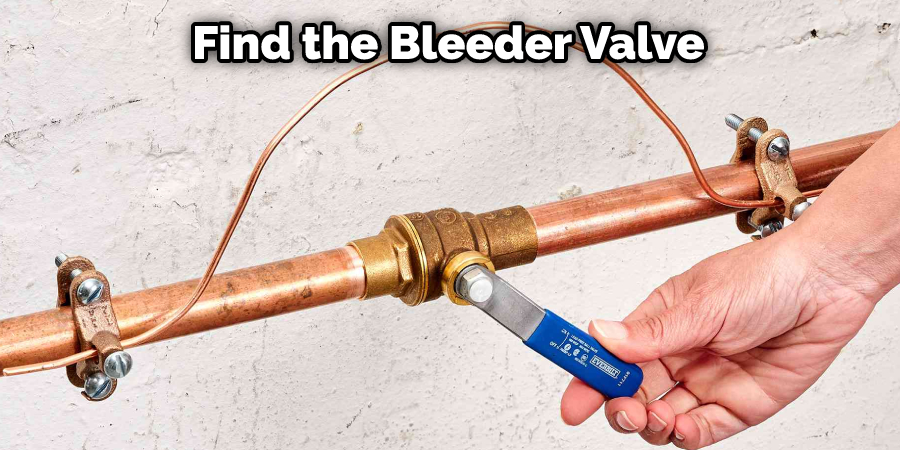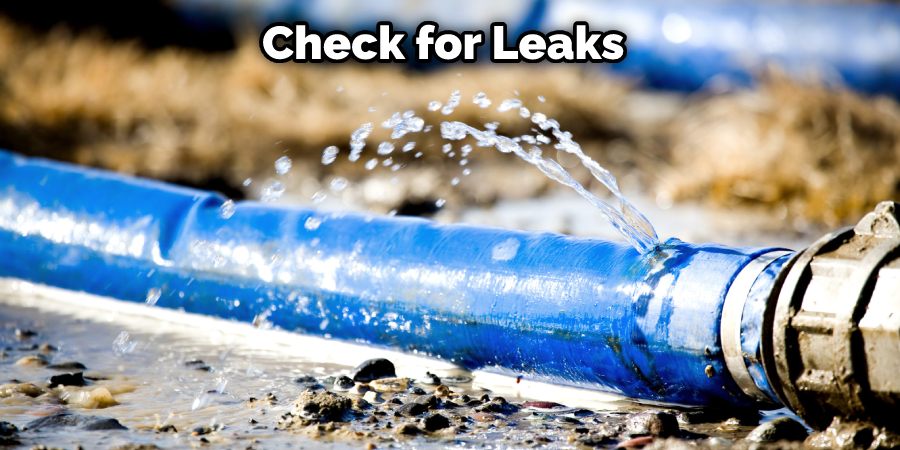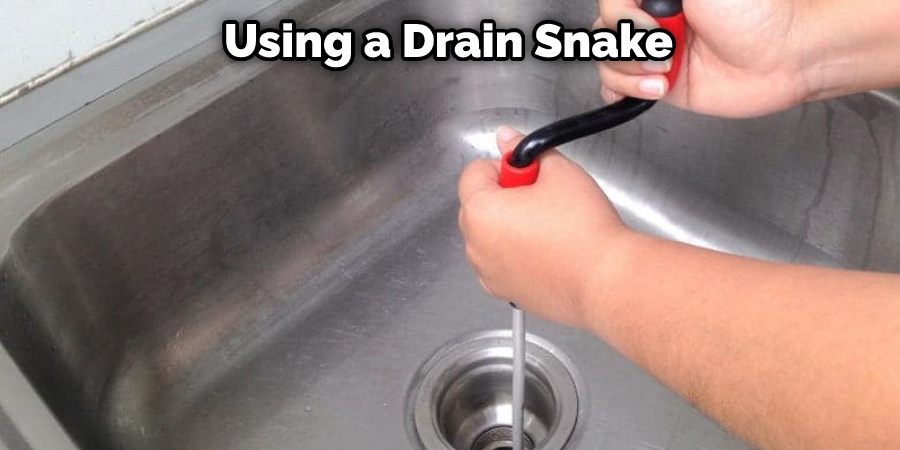Did you know that almost a third of all water pipes in the United States experience an airlock at some point or another? An airlock is when there is a blockage in the pipe that disrupts the flow of water, causing it to back up and create pressure. This can lead to all sorts of problems, from low water pressure to burst pipes. This blog post will show you how to fix airlock in water pipes by yourself.
The airlock is when air gets trapped in the water pipes and causes the water to not flow well or even stop. Most of the time, you can fix this by getting the air out of the system. This is something that is not too difficult to do and only requires a few tools and some knowledge.

If your water pressure is low or your pipes are making strange noises, you might have an airlock. To get rid of the air, you’ll need to find the bleeder valve. This is usually near the water meter or pressure regulator. Once you’ve found it, open the valve and let the water flow until it’s clear. You might have to do this a few times to get all the air out.
There are several ways how to fix airlock in water pipes, depending on the nature of the problem. Here we will discuss the most effective methods for restoring water flow in a pipe with an airlock. Keep reading for more information.
Summary: If you find that your water pipes have Airlocks that are not working correctly, there is a way to fix them. First, find out what is causing the Airlock to not work. Sometimes, the Airlock can be blocked by debris or sediment, in which case you will need to clear it using a plunger or a vacuum cleaner. If the Airlock is not blocked, then you may need to replace the water pipe.
What Causes Airlock in Water Pipes?
Airlock in water pipes is caused by a change in pressure between the inside of the pipe and the outside atmosphere. This can happen when a tap is turned on suddenly or when water is forced through a small opening.
The pressure difference causes air to be drawn into the water pipe, creating an airlock. Airlocks can also be caused by a change in temperature, which can cause the water to expand and contract. This can happen when hot water is run through a cold water pipe.
A temperature change can cause an airlock. When water is heated, it expands and pushes the air inside the pipe out. The air can contract and be drawn back into the pipe if the water cools too quickly. This can happen if a faucet is turned on suddenly after the water has been sitting in a cold line for a long period of time.
An airlock is a bubble of air that can get stuck in a water pipe. If this happens, it can cause the water to stop flowing or to come out of the faucet. Sometimes you can fix the problem by letting the air out of the pipe. This is done by opening a valve at the highest point in the piping system. Once the air has been released, the water should begin to flow normally.
Can Air in Water Pipes Cause Damage?
While the air in water pipes isn’t typically harmful, it can cause damage if the air bubbles become trapped. This can happen when there’s a change in water pressure, causing the bubbles to get stuck in small pockets throughout the pipe. Over time, these pockets can become large enough to cause leaks or even burst pipes.
If you think you may have a problem with air in your water pipes, the best thing to do is fix it. In some cases, simply letting the air out of the pipes will fix the problem. However, if there’s extensive damage, you may need to consult a professional. Either way, it’s important to address the issue as soon as possible to avoid further damage.
Tools and Materials
- Bleeder valve
- Water pump
- Pipe wrench
- Adjustable wrench
- Hammer
- Chisel
- Screwdriver
- Pliers
15 Easy Ways on How to Fix Airlock in Water Pipes
1. Locate the Bleeder Valve
The first step is to find the bleeder valve. It is generally located near the water meter or pressure regulator. Bleeder valves are used to release the air from the pipes. It is a small valve with a round handle.

2. Open the Valve
Once you have found the valve, use a wrench to open it. Then, slowly turn the valve until water starts flowing out. This will release the airlock and allow water to flow through the pipes again.
3. Close the Valve
As soon as the water starts coming out of the valve, close it quickly. Doing this will help to reduce the amount of water that is lost. You should then open the valve slowly and allow the air to escape before turning the valve back on.
4. Check for Leaks
Once you have fixed the airlock, it is important to check for leaks. This can be done by turning on all the taps in your home and checking the meter. If there is a leak, you will see the meter reading change.

5. Turn on the Water
After checking for leaks and fixing them, you can now turn on the water. Start by turning on the main water supply to your home. Once the water is running, go to each individual faucet and turn it on one at a time. Doing this will help get rid of any air that may still be in the lines.
6. Check the Pressure
If you notice that the water pressure is low, you may need to adjust the pressure regulator. This can be done by turning the knob or screw on the regulator clockwise. If the pressure is too high, turn the knob or screw counterclockwise. If the pressure is just right, leave the regulator alone.
7. Use a Plunger
If the water is still not flowing, you can try using a plunger to dislodge the airlock. Splash some water around the rim of the plunger to lubricate it, and then place it over the drain. Next, push and pull the plunger up and down vigorously to create suction. This should help to break the airlock and get the water flowing again.

8. Use a Wire Hanger
If you don’t have a plunger, you can try using a wire hanger to dislodge the airlock. First, straighten out the hanger. Then, make a small hook at one end. Insert the hook into the drain and start moving it around to loosen the clog. Be careful not to scratch the pipes.
9. Use Boiling Water
Pouring boiling water down the drain can also help to break up the airlock. However, be careful not to pour too much at once, as this could cause the trap to overflow. You may need to repeat this process several times before the airlock is completely removed.
10. Use Vinegar and Baking Soda
This is a good method to use if you want to avoid using harsh chemicals. Simply mix together equal parts vinegar and baking soda and pour it down the drain. Let it sit for a few minutes before flushing with hot water.
11. Use Dish Soap
If you have dish soap in your kitchen, you can use it to help break up the airlock. Pour a generous amount of dish soap down the drain and then run hot water from the tap for a few minutes. The dish soap will help to break up the airlock, and the hot water will flush it out of the pipes.
12. Use a Snake
If you have a drain snake, you can use it to break up the airlock. Insert the tip of the snake into the drain and turn it clockwise. The snake will break up the airlock and allow water to flow through again as you turn.

13. Call a Plumber
If you have tried all of these methods and the airlock still persists, you may need to call a plumber to diagnose and fix the issue. There may be a bigger problem with your plumbing that is causing the airlock, and only a professional will be able to fix it.
14. Wrap Up
Airlocks in water pipes can be a nuisance, but they are relatively easy to fix. The most important thing is to identify the source of the airlock and then take the appropriate steps to remove it. With a little patience and some elbow grease, you should be able to get rid of that pesky airlock in no time. Next, wrap up the job by turning on the water and checking for leaks. You may need to repeat the process a few times before the airlock is completely gone, but it’s well worth the effort to have clear, flowing water in your home.
Frequently Asked Questions
What Causes Airlock in Water Pipes?
There can be a number of reasons why airlocks may form in water pipes, and the most common is clogged filters. This happens when small pieces of debris get caught in the filter and prevent water from flowing through it correctly. Over time, this will cause the pipe to become blocked which then requires plumbers to break it open and fix the issue.
Another common reason for airlocks is calcium buildup inside the pipeline. When this happens, saltwater seeps into cracks or crevices on either side of the pipe walls and forms layers of mineral crystals that eventually block water flow altogether. In some cases, these deposits can be so thick that they completely shut off a section of a pipeline entirely!
Will an Airlock Clear Itself?
Some Airlocks may clear themselves automatically, while others may require manual intervention. Generally, Airlocks should clear themselves after a few hours or days, but it is always best to consult your Airlock manufacturer for specific instructions.
Can Air in Water Pipes Cause Damage?
Yes, the air in water pipes can cause damage. This includes corroding the metal surfaces of the pipes and dirt and dust entering them through the crevices. In extreme cases, this can lead to flooding or even a fire. The best way to avoid these problems is to keep your water pipes clean by regularly flushing them with fresh water.
What Causes a Pump to Air Lock?
A pump that air locks is typically caused by a blockage in the piping system. The blocked passage causes water to be forced back up the pump, which then causes the pump’s impellers to become jammed. This can lead to reduced pumping capacity and ultimately cause flooding in your home or business. If you notice any unusual sounds coming from your pumps, it may be wise to schedule an appointment with a plumbing professional for inspection and possible repairs.
Conclusion
Airlock in water pipes can cause many problems, including decreased water pressure and even pipe bursts. Here’s how to fix airlock in water pipes. If you’re having problems with your water pressure, you should first check for an airlock. An easy way to do this is to turn on all of your faucets and see if any of them produce a lot of bubbles. If they do, then you have an airlock and need to take steps to correct it.
If you are having trouble with your water pipes, and it seems to be an airlock issue, there are a few things that you can do to try and fix the problem. We’ve outlined some of these solutions for you in this blog post, and we hope that one of them will help you get your water flowing again. Have you tried any of these methods for fixing an airlock in your water pipes? Let us know in the comments below.
